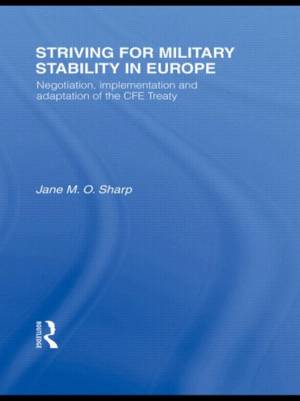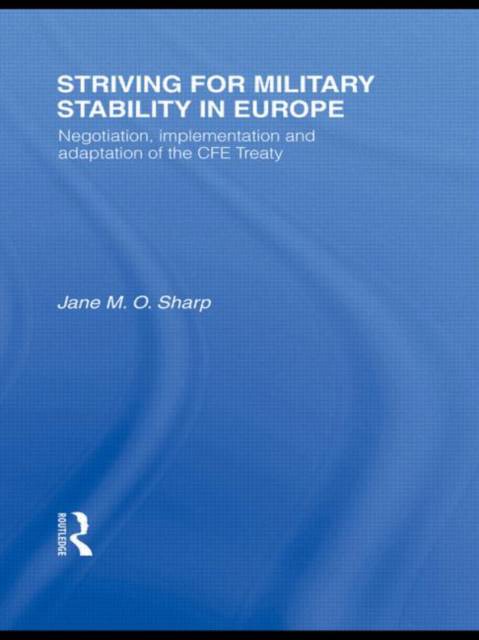
- Afhalen na 1 uur in een winkel met voorraad
- Gratis thuislevering in België vanaf € 30
- Ruim aanbod met 7 miljoen producten
- Afhalen na 1 uur in een winkel met voorraad
- Gratis thuislevering in België vanaf € 30
- Ruim aanbod met 7 miljoen producten
Striving for Military Stability in Europe
Negotiation, Implementation and Adaptation of the Cfe Treaty
Jane M O SharpOmschrijving
This new book traces the changing relationship between Russia and NATO through the prism of conventional arms control, focusing on the negotiation, implementation and adaptation of the Conventional Armed Forces in Europe (CFE) Treaty.
The author shows that arms control agreements reflect relations between parties and how the CFE Treaty codified parity between NATO and the Soviet-led Warsaw Treaty Organization (WTO) in November 1990. Although still widely viewed in the West as the cornerstone of security and stability in post-Cold War Europe, from the Russian perspective the treaty was soon overtaken by events. With the collapse of the WTO and the Soviet Union in 1991, it became impossible to talk of a military balance between East and West in Europe, especially as all the former WTO states opted for membership in NATO. This study details how the other state parties worked hard to adjust and adapt the treaty to meet Russian concerns about its new weakness relative to NATO, and the issues that complicated Russian acceptance of CFE limits.
This book will be of great interest to all students of NATO, European politics, international relations and strategic studies in general.
Specificaties
Betrokkenen
- Auteur(s):
- Uitgeverij:
Inhoud
- Aantal bladzijden:
- 312
- Taal:
- Engels
- Reeks:
Eigenschappen
- Productcode (EAN):
- 9780415354592
- Verschijningsdatum:
- 9/12/2005
- Uitvoering:
- Hardcover
- Formaat:
- Genaaid
- Afmetingen:
- 156 mm x 234 mm
- Gewicht:
- 612 g

Alleen bij Standaard Boekhandel
Beoordelingen
We publiceren alleen reviews die voldoen aan de voorwaarden voor reviews. Bekijk onze voorwaarden voor reviews.











